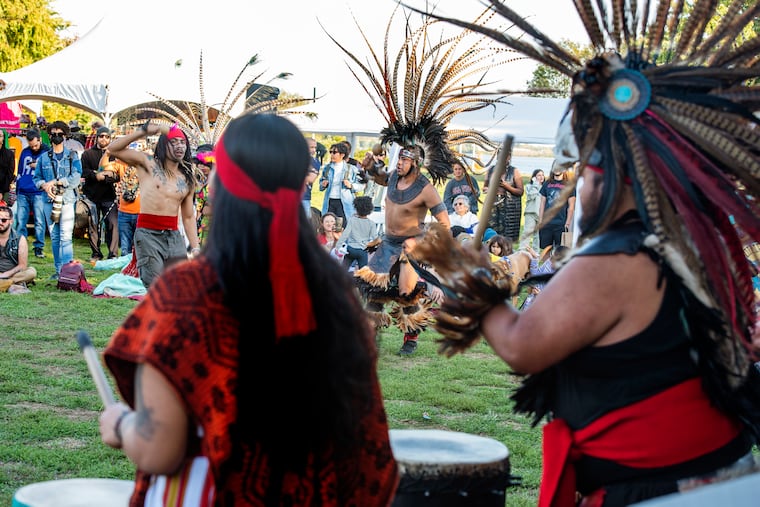Penn Treaty Park should be renamed to honor Chief Tamanend
A treaty is between two people, yet we only honor William Penn. Rename the park to recognize the incredible contributions of Chief Tamanend, of the Lenni Lenape Native American tribe, to our city.

Sometimes we hear a title or phrase so often that we stop thinking about what it is saying. Take Penn Treaty Park.
It’s a park named after a treaty, but it’s named after only one person: William Penn. A treaty is an agreement between two parties, therefore its title should contain the names of both signatories, like the Egypt and Israel Treaty of Peace, which was signed in 1979.
Recently, I have been visiting Penn Treaty Park and reading the numerous plaques describing its historic significance. They repeatedly state that Penn signed a treaty with the “Indians.” The notices give Penn all the credit, without any mention of the person who was on the other side of the pen.
The man who signed the peace treaty with Penn was the leader of the Lenni Lenape Native American tribe, Chief Tamanend. He was known as a peacemaker. To mark the agreement, Chief Tamanend had a wampum belt made, which he gave to Penn. It is one of the signature pieces of the large collection of artifacts that the city recently gave to Drexel University.
» READ MORE: Photos of Philadelphia’s 6th annual Indigenous Peoples Day celebration
In contrast to the statue of Penn that oversees the city from its majestic perch on top of City Hall, Tamanend’s statue is located at Market and Front Streets. It’s literally guarding the quickest way out of town, the I-95 onramp, and so easy to miss.
But when you have a moment, it’s worth taking a pause to appreciate Chief Tamanend and the role he played in our city’s history.
That statue, erected in 1995, is majestic, with many symbolic elements. For instance, Chief Tamanend is standing on a turtle. To Lenni Lenape, the box turtle symbolizes Mother Earth; Chief Tamanend was from the Turtle Clan. Near his shoulder is an eagle, which represents a messenger of the Great Spirit; in his talons, he is holding the wampum belt.
Upon the signing of the treaty, Chief Tamanend reportedly said that the Lenni Lenape and the English colonists would “live in peace as long as the waters run in the rivers and creeks and as long as the stars and moon endure.” Of course, that didn’t happen.
Penn Treaty Park was dedicated in 1893. But its messaging is incomplete.
Just think how much effort was put into the Great Elm tree at Shackamaxon (as Lenni Lenape call the area) that the treaty was signed under. It was destroyed by a storm in 1810. According to plaques at the park, a cutting from the original tree was planted as a replacement in 1993. All that’s there now is a rosebush. A later descendant of the original tree was planted in 2010, which still stands.
We can do more to honor Philadelphia’s Indigenous roots. The Lenni Lenape continue to be a presence in our area, and Philadelphia should invite them to document their crucial role in the city.
“We have done a poor job of recognizing the significance of Native Americans in our history.”
We are only beginning to acknowledge a fundamental truth: Our city and our nation were built by many people who were never given proper credit. There are sovereign nations of Indigenous people who lived on this land long before we did. And Native Americans are still here — there are 573 sovereign tribal nations that have a formal relationship with the U.S. government today.
We have done a poor job of recognizing the significance of Native Americans in Philadelphia’s history, and we need to tell those stories in ways that endure, like plaques and historic markers. People shouldn’t need to attend a formal gathering or stumble across Indigenous history on the internet.
Philadelphia could start by giving one man his due — at the park whose history he coauthored — by changing the name of Penn Treaty Park to Penn Tamanend Park.
Michael Clemmons is a docent at the African American Museum in Philadelphia and secretary of the Black Docents Collective.